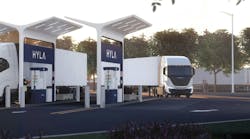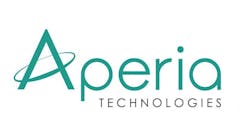An ISO-4406 cleanliness rating for fluids is expressed as three numbers, such as 17/15/10. The numbers, left to right, are codes for the approximate number of particles— contained in a very small (1-milliliter) sample—that are 4 microns and larger, 6 microns and larger, and 14 microns and larger. A 17 code in the example indicates that the 1-milliliter sample likely contains between 640 and 1,300 particles 4 microns and larger.
The ISO system actually is based on analyzing 100-milliter (about 4-ounce) samples with a particle-counting instrument to determine the number of particles present in each of the three size ranges. The code numbers and their associated particle counts are a function of the number 2 being multiplied by itself. A 10 code in the example means that 210 or 1,024 particles 14 microns and larger were in the sample.
Each code actually represents a range of particle counts, so a 10 means that the 100-milliliter sample contains between 29 (512) and 210 (1,024) particles. Since the ISO system is based on particles/milliliter, however, those counts are divided by 100, meaning that a 10 code represents a 1-milliliter sample with between 5 and 10 particles in a given size range. The ISO-4406 chart rounds particle counts in some instances for convenience.
| Code | Particles/100 ml | Particles/ml |
| 6 | 64 | 0.32-0.64 |
| 7 | 128 | 0.64-1.3 |
| 8 | 256 | 1.3-2.5 |
| 9 | 512 | 2.5-5 |
| 10 | 1,024 | 5-10 |
| 11 | 2,048 | 10-20 |
| 12 | 4,096 | 20-40 |
| 13 | 8,192 | 40-80 |
| 14 | 16,384 | 80-160 |
| 15 | 32,768 | 160-320 |
| 16 | 65,536 | 320-640 |
| 17 | 131,072 | 640-1,300 |
| 18 | 262,144 | 1,300-2,500 |
| 19 | 524,288 | 2,500-5,000 |
| 20 | 1,048,576 | 5,000-10,000 |
| 21 | 2,097,152 | 10,000-20,000 |
| 22 | 4,194,304 | 20,000-40,000 |
| 23 | 8,388,608 | 40,000-80,000 |
| 24 | 16,777,216 | 80,000-160,000 |




